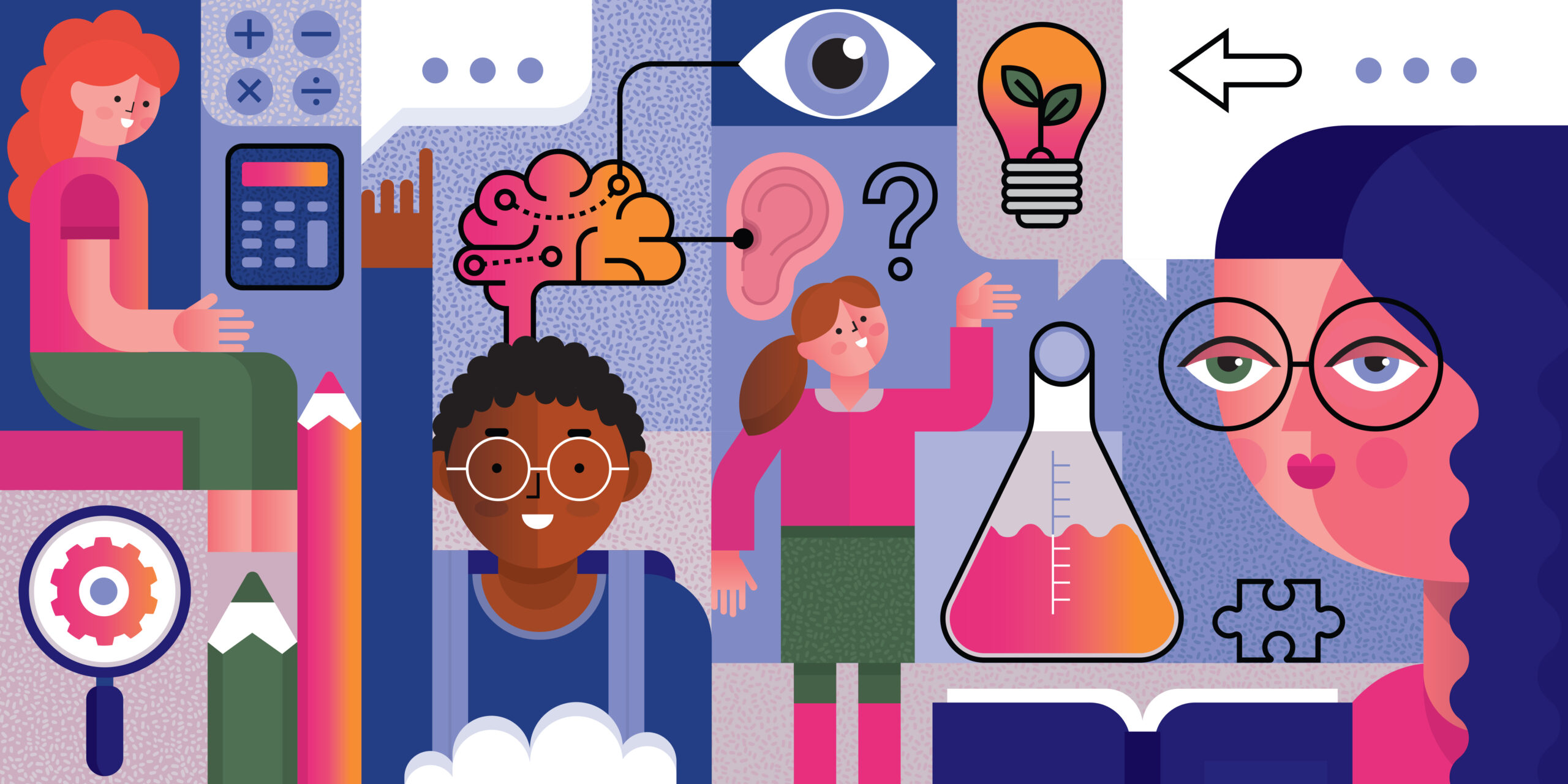Education is often referred to as the great equalizer, yet disparities in access, resources, and opportunities continue to hinder student success. As we look to the future, the challenge is not just to improve education but to reimagine it—ensuring that every learner, regardless of background, has access to meaningful, high-quality learning experiences. Research suggests that achieving educational equity leads to greater economic growth, stronger communities, and a more innovative workforce (Hanushek & Woessmann, 2016).
A Vision for the Future
Imagine a world where education is truly equitable, where every student has the resources, support, and opportunities they need to thrive. In this future, innovation drives personalized learning, collaboration strengthens communities, and a shared commitment to student success unites educators at all levels. Research underscores that equitable education improves social mobility and reduces poverty rates, benefiting both individuals and society (National Academies of Sciences, Engineering, & Medicine, 2019).
Yet, achieving this vision requires acknowledging that equity does not mean sameness. It means recognizing that students arrive with different strengths, challenges, and lived experiences. The future of education must be flexible enough to honor these differences while holding all learners to high expectations. This shift requires courage from educators and policymakers alike, as well as the willingness to rethink long-standing traditions that no longer serve today’s learners.
Innovation: Reshaping Learning for All
Technology has the power to transform education, but true innovation goes beyond digital tools—it redefines how we teach and learn. Future classrooms will be dynamic, adapting to each student’s needs with AI-driven tutoring, immersive virtual environments, and competency-based learning. A report from the Georgetown University Center on Education and the Workforce (Carnevale et al., 2019) highlights how technology-enhanced, personalized learning models improve student engagement and achievement. Additionally, competency-based education has been shown to increase student retention and academic success, particularly for nontraditional learners (Kelly & Columbus, 2020).
But innovation is not solely about technology. It is about creating learning environments where curiosity, creativity, and problem-solving flourish. For example, project-based learning and experiential education give students opportunities to apply classroom knowledge to real-world issues. When students design solutions for local environmental challenges or partner with community organizations, they see the relevance of education in action. These approaches not only increase motivation but also prepare learners for the collaborative, interdisciplinary challenges of the modern workforce.
Collaboration: Strengthening the Educational Ecosystem
No single educator, institution, or policy can create lasting change alone. The future of education depends on partnerships—between teachers, families, communities, and industries. Schools that collaborate with local businesses, healthcare providers, and social services create holistic support systems that enhance student success (Lochner, 2011). These partnerships help address non-academic barriers to learning, such as food insecurity, mental health, and career readiness. Studies show that schools with strong community engagement see improved student outcomes and higher graduation rates (Bryk et al., 2010). Community engagement provides students with access to mentorship, enrichment opportunities, and wraparound support services that help them stay on track. For instance, partnerships with local businesses can open doors to internships and job shadowing, while collaborations with healthcare providers ensure that students have access to essential physical and mental health resources. Research indicates that these integrated support systems not only boost academic performance but also foster a sense of belonging and purpose, both of which are critical to long-term success (Sanders, 2017).
Collaboration also requires rethinking the relationship between K–12 and higher education. Too often, these systems operate in silos, leaving students underprepared for college or careers. By creating seamless pathways that connect high school coursework with postsecondary programs and workforce needs, educators can ensure smoother transitions and stronger outcomes for students. Apprenticeships, dual enrollment programs, and career academies are powerful examples of how collaboration can bridge these gaps.
Commitment: Building a System That Works for Everyone
Equity in education requires intentional commitment. Addressing systemic barriers, investing in underserved communities, and ensuring that all students—regardless of socioeconomic status, race, or ability—have access to the same high-quality learning experiences is crucial. Research confirms that equitable school funding and early childhood education significantly improve long-term student success and economic outcomes (National Academies of Sciences, Engineering, & Medicine, 2019). Furthermore, well-funded schools with equitable resource distribution produce higher-achieving graduates who contribute more to society (Hanushek & Woessmann, 2016).
This commitment also extends to teacher support. Educators are at the heart of transformation, and their professional development, well-being, and sense of agency are essential for meaningful change. Schools that invest in teacher mentorship, continuous training, and leadership opportunities see stronger student outcomes and greater innovation in the classroom.
The Path Forward
The journey to a more equitable education system begins today. By embracing innovation, fostering collaboration, and committing to systemic change, we can create a future where every student can reach their full potential. The challenge is great, but the promise of a brighter tomorrow is within our reach—if we dare to reimagine what’s possible.
Michele Poulos has dedicated more than twenty-five years to education, with experience spanning elementary, secondary, and post-secondary settings. She holds a Bachelor’s degree in Elementary Education, a Master’s degree in Psychology, and is currently pursuing her doctoral degree in Human and Learning Science. Throughout her career, she has taught and learned in both traditional classrooms and fully online environments, giving her a unique perspective on how students thrive across modalities. Michele currently serves as the Director of Online Education at Pima Medical Institute, where she oversees online programs, faculty development, and strategic initiatives designed to enhance student learning and success. Her professional accomplishments have been recognized nationally, as she was inducted into Marquis Who’s Who in America for four consecutive years (2022–2025). Her passion for education is matched by her commitment to family life. She resides in Naples, Florida, with her husband and their two children—ten-year-old Trenton and eight-year-old Eliana—who continually inspire her dedication to both teaching and lifelong learning.
References
Bryk, A. S., Sebring, P. B., Allensworth, E., Luppescu, S., & Easton, J. Q. (2010). Organizing schools for improvement: Lessons from Chicago. University of Chicago Press.
Carnevale, A. P., Garcia, T. I., & Gulish, A. (2019). Career pathways: Five ways to connect college and careers.Georgetown University Center on Education and the Workforce. https://cew.georgetown.edu/
Hanushek, E. A., & Woessmann, L. (2016). Knowledge capital, growth, and the East Asian miracle. Science, 351(6271), 344-345. https://doi.org/10.1126/science.aad7796
Kelly, A. P., & Columbus, R. (2020). Innovation and the future of higher education. American Enterprise Institute.
Lochner, L. (2011). Non-production benefits of education: Crime, health, and good citizenship. NBER Working Paper No. 16722. https://doi.org/10.3386/w16722
National Academies of Sciences, Engineering, and Medicine. (2019). The promise of early childhood development in Latin America and the Caribbean. National Academies Press. https://doi.org/10.17226/25617
Sanders, M. G., & Galindo, C. (2017). Transforming educational experiences in low-income communities: A qualitative case study of social capital in a full-service community school. American Educational Research Journal, 54(1_suppl), 140S–163S. https://doi.org/10.3102/0002831216676571








